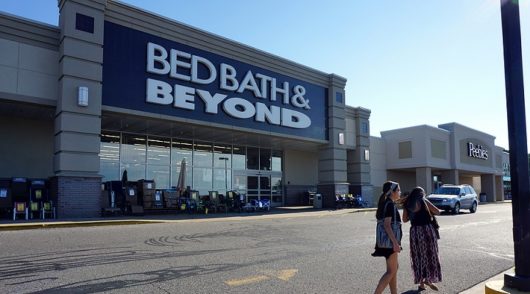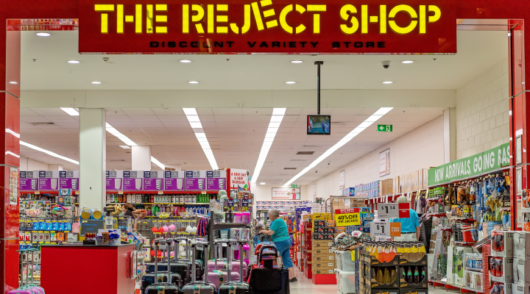 The convenience channel has outpaced the growth of the grocery channel over the course of 2014, recording sales growth of 4.5 per cent, compared to the 2.6 per cent recorded by the country’s major grocers, according to a report by the Australasian Association of Convenience Stores (AACS).
The convenience channel has outpaced the growth of the grocery channel over the course of 2014, recording sales growth of 4.5 per cent, compared to the 2.6 per cent recorded by the country’s major grocers, according to a report by the Australasian Association of Convenience Stores (AACS).
The annual State of the Industry Report says it is the third year convenience growth has surpassed the growth of supermarket majors. In 2012, convenience stores grew at a faster rate than the grocery channel for the first time since 2008.
AACS CEO, Jeff Rogut, said it is encouraging to see this trend maintained.
“This is another outstanding result from our industry against the background of challenging retail conditions. The emphasis that retailers and suppliers are placing on innovation and store execution to meet shifting consumer needs and shopping behaviours is clearly paying dividends and gives us all reason to be confident in the future of this vital sector of the small business economy,” Rogut said.
Interestingly, the growth in non-food again outperformed growth in the food category, as was the case in 2013. A major contributor to the non-food result was tobacco, with excise increases helping to add $232 million in additional sales value to the category.
Turning to fuel, volumes were up 3.6 per cent over the course of 2014 in measured independent stores as customers responded to cheaper fuel prices and the benefits of the cap on discount vouchers offered by the major supermarkets flowed back to independent retailers. There has been a trend towards customers not filling up as frequently, but merchandise transactions were slightly up again as was the average transaction value.
Convenience channel performance
The convenience channel value increased by 4.5 per cent in 2014, up from 3.7 per cent in 2013.
Rogut said the fluctuations in the food and non-food results reinforce the importance of convenience stores to maintain their focus on anticipating customer needs and adapting their offer.
“As the need to continually innovate becomes ever clearer, the industry must focus on customer service and optimise the performance of key categories to cement a strong and sustainable future over the long term,” Rogut said.
Fuel
Fuel volumes increased by 3.6 per cer cent in 2014 as cheaper fuel pricing proved a winner for consumers. The average price of fuel in 2014 was $1.49, which was one cent per litre higher than 2013.
Rogut said the ACCC has played a significant role in levelling the playing field where fuel was concerned.
“The AACS applauds the ACCC for the proactive and productive role it has adopted in relation to supermarket discount fuel dockets, as this has been an important support for independent retailers and small businesses like convenience stores,” Rogut said.
“We continue to work towards securing decisive action on another issue of crucial significance to small businesses – petrol theft.”
Petrol theft was up 6.8 per cent for calendar year 2014 in a sign that existing efforts by police and state governments to deter and punish petrol thieves are totally insufficient and weak.
The crime on average now costs each convenience store in the country $220.58 per week, equating to approximately $66 million nationally.
Tobacco surges ahead
The report reaffirmed the importance of tobacco to convenience stores, accounting for 37.3 per cent of a typical convenience store’s sales.
Tobacco was the main contributor to growth in the non food category, as it was in 2013, despite the volume sold only increasing 0.3 per cent. The additional sales generated in Tobacco contributed more than 100 per cent of the non food growth, the price increases from excise tax being the main driver.
This result was in spite of plain packaging, the merits of which remain the subject of intense debate, as well as shoppers continuing to trade down to more value offers.
The tobacco category grew 8.9 per cent over the course of the year, adding $232 million in value to the category, perhaps the most striking figure to dispel the claims by the health lobby that plain packaging has worked. The actual sales data suggests that, if anything, it has had the opposite effect.
Around 10 per cent of smokers use the convenience channel as their main place of purchase. Consumer preference to use convenience is growing especially in the roll your own tobacco category.
Beverages
The AACS State of the Industry Report shows that the beverages category grew by 3.5 per cent, although this was down from 4.9 per cent growth in 2013. Take home beverage sales were up 8.7 per cent, while ready to drink sales increased 2.5 per cent, which combined added more than $62 million in category sales.
The major contributors to beverages growth have been hot drinks (mostly coffee) and dedicated ice coffee, while shoppers are purchasing fewer traditional beverages such as soft drinks and frozen carbonated beverages, which have been impacted by stronger competition from fast food outlets.
Hot drink sales increased 31 per cent, equating to $29 million of additional sales, with coffee clearly a key product for stores to focus on in the future. Consumers are increasingly visiting convenience stores to satisfy their coffee needs.
Dedicated ice coffee has continued to grow strongly, with sales up 10.3 per cent in 2014. Dare Iced Coffee is responsible for much of this growth, as a result of more promotional activity. Today, there is stronger competition in this category due to the launches of Barista Bros and V Iced Coffee, which accelerated sales growth in this segment to 16 per cent in the last quarter of 2014.
Finally, energy drinks recorded growth of 4.1 per cent with the main contributors being V and Red Bull multi-packs. As a result, growth of all energy drink multi-packs increased from five per cent in 2013 to 34 per cent in 2014. While the growth in singles has slowed recently, shoppers are consuming more and spending more on energy drinks.
Rogut said the channel’s performance in 2014 generates confidence in the future of the industry as increasingly time poor consumers recognise and respond to the value proposition that convenience stores offer.
“Convenience stores have proven their capacity to evolve and innovate their offer to better meet their customers’ needs. While this is ongoing process, the industry is awash with talented professionals operating in stable, long term businesses with strong brands, systems and proven managers unwilling to rest on their laurels,” he said.






